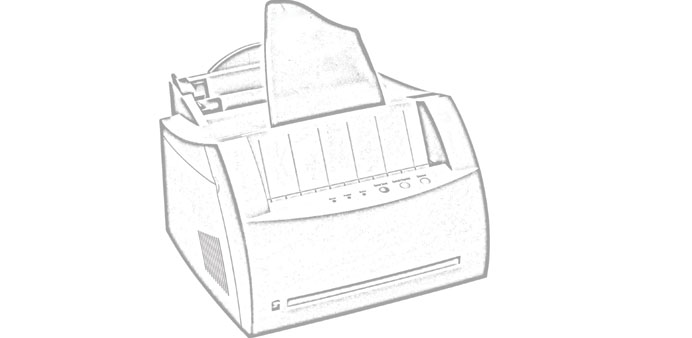|
Back in 1969, a graduate named Gary Starkweather, working in the copier department at Xerox in the US, had a visionary idea. He wanted to utilise new laser technology to create a radically different type of printer. It would scan an image, transfer it electrostatically, and then use heat to fuse tiny specs of toner dust on to a piece of paper. |
The top brass at Xerox thought his idea was wildly unrealistic. But Starkweather persisted and a decade later the first commercial laser printers went on sale. The only drawback was that they were the size of a small car – and equally expensive.
As home printing took off three decades ago, it was cheap inkjet models – which simply hammered tiny dots of ink on to paper – that would end up in most people’s homes. The bulky laser version was a business-only product.
However, the last few years have seen the size and price of laser printers drop dramatically. Some models can now comfortably fit on a desktop.
Basic monochrome models can be bought for less than £100 (around QR550), although more sophisticated colour versions – with features such as Wi-Fi and duplex printing – can sell for three times that, and more. This compares with the £50 (around QR275) and less that inkjet printers sell for. So a laser will only make sense if the savings on ink outweigh the extra cost of the machine.
Standard laser cartridges – coloured toner (dry ink), typically cyan, magenta, yellow, and black (CMYK) – contain a lot of intricate components, print anything from 1,500-3,500 pages but can set you back a hefty £60-£120 (around QR330-QR660) each. Still, that compares well with the measly 200 pages you are likely to get from the standard inkjet cartridge costing around £15 (around QR80).
So do laser printers now represent a cost-effective alternative for the home consumer?
“It depends on how many pages you print,” says Patrick Stead, head of cartridge recycler Environmental Business Products. “Laser can be better value over the longer term, but the initial outlay can be a lot more.”
Cursory number-crunching indicates that if you print only, say, 1,000 pages a year – based on ISO standard 5% paper coverage – then the inkjet, at about 5p (around QR2.80) per page, is better value.
But for anyone who prints more than 2,000 pages a year, a laser printer, at about 3p (around QR1.66) per page, is cheaper. The savings increase the more you print. A screenwriter, for instance, who prints 10,000 pages, stands to save hundreds of riyals by switching.
“If you print a lot of black and white documents then a laser can save you a lot of money,” says Laura Heywood, managing director, at laser cartridge remanufacturer Kleen Strike.
But inkjet does have its advantages. At the domestic end of the market the print quality is higher and the colour definition better. “If you print mostly photos then you probably want to stick with an inkjet printer,” Heywood adds.
David Connett, editor of industry magazine The Recycler, says: “If you’re buying a laser printer, it’s important to work out what you’re going to use it for before deciding on a model. As a rule of thumb, the cheaper the printer, the smaller the cartridge, and the lower the page yield.”
“Do not buy a laser printer on price alone,” says Heywood. “Always look at the cost of the replacement cartridges and their print yield.”
One way to save money on these is to buy refilled cartridges, which can be 30-50% cheaper than the original price, according to the European Toner & Inkjet Remanufacturers Association.
Peter Thompson, director at laser cartridge recycler PBT International, says: “Properly remanufactured laser cartridges are excellent value. But some producers find ways to cut corners, which can result in leakage and sometimes uneven printing. Try to buy from a reputable seller.”
Experts say it’s always worth investing in a laser that supports duplex printing – printing on both sides of the paper – which cuts down on energy and paper consumption.
“Some laser printers automatically print on both sides,” says Connett. “Other models allow you to reinsert pages manually to print the second side. And some do not support duplex printing at all.”
It may also be worth buying a printer that is Wi-Fi compatible so that one click of a button will allow you to print, whether from laptop or smartphone.
Thomson concludes: “If you think how little ink is in the average inkjet cartridge compared to the average laser cartridge the economics are in favour of laser. Sometimes the cartridge prices aren’t that different. But those for the laser can last an awful lot longer.”- Guardian News and Media

